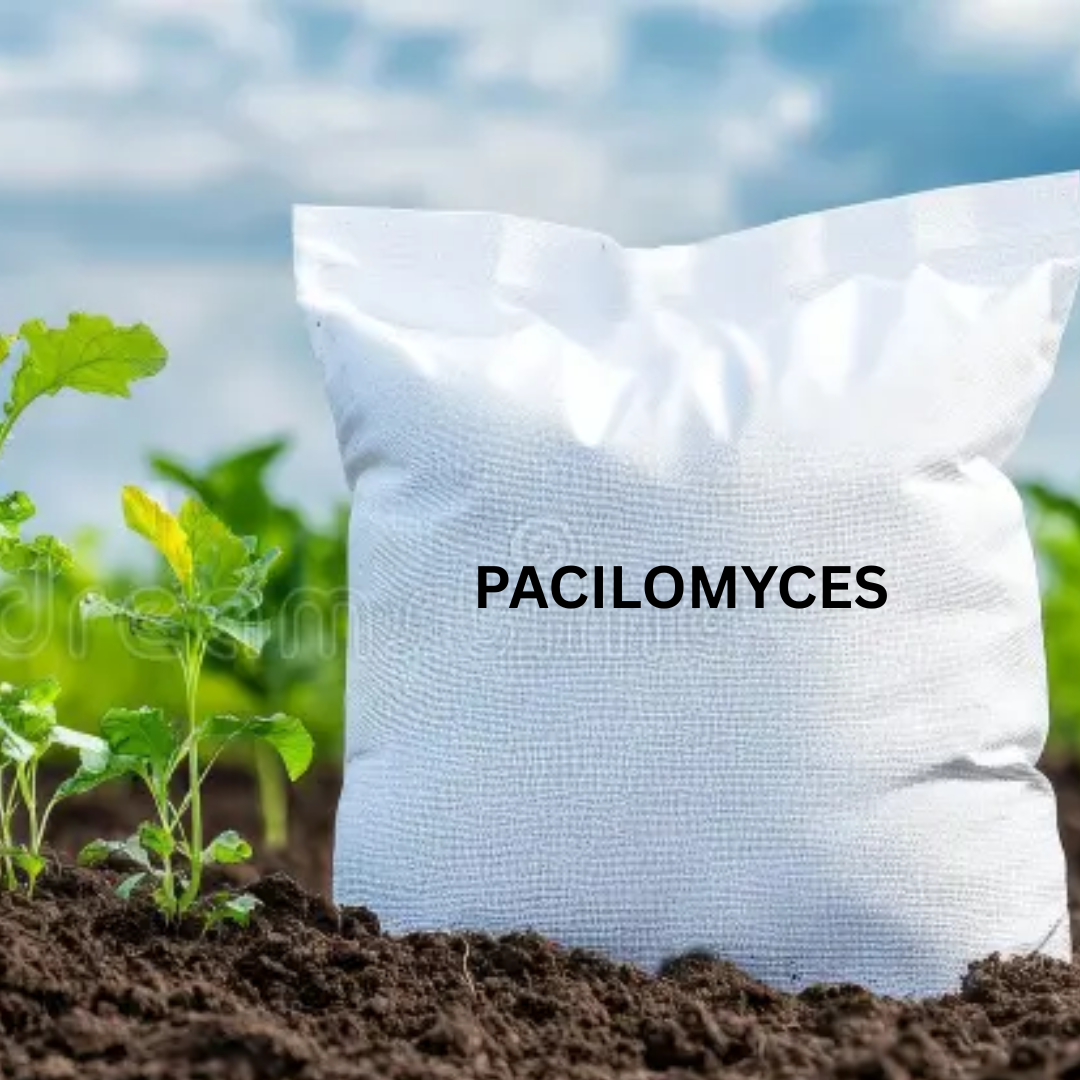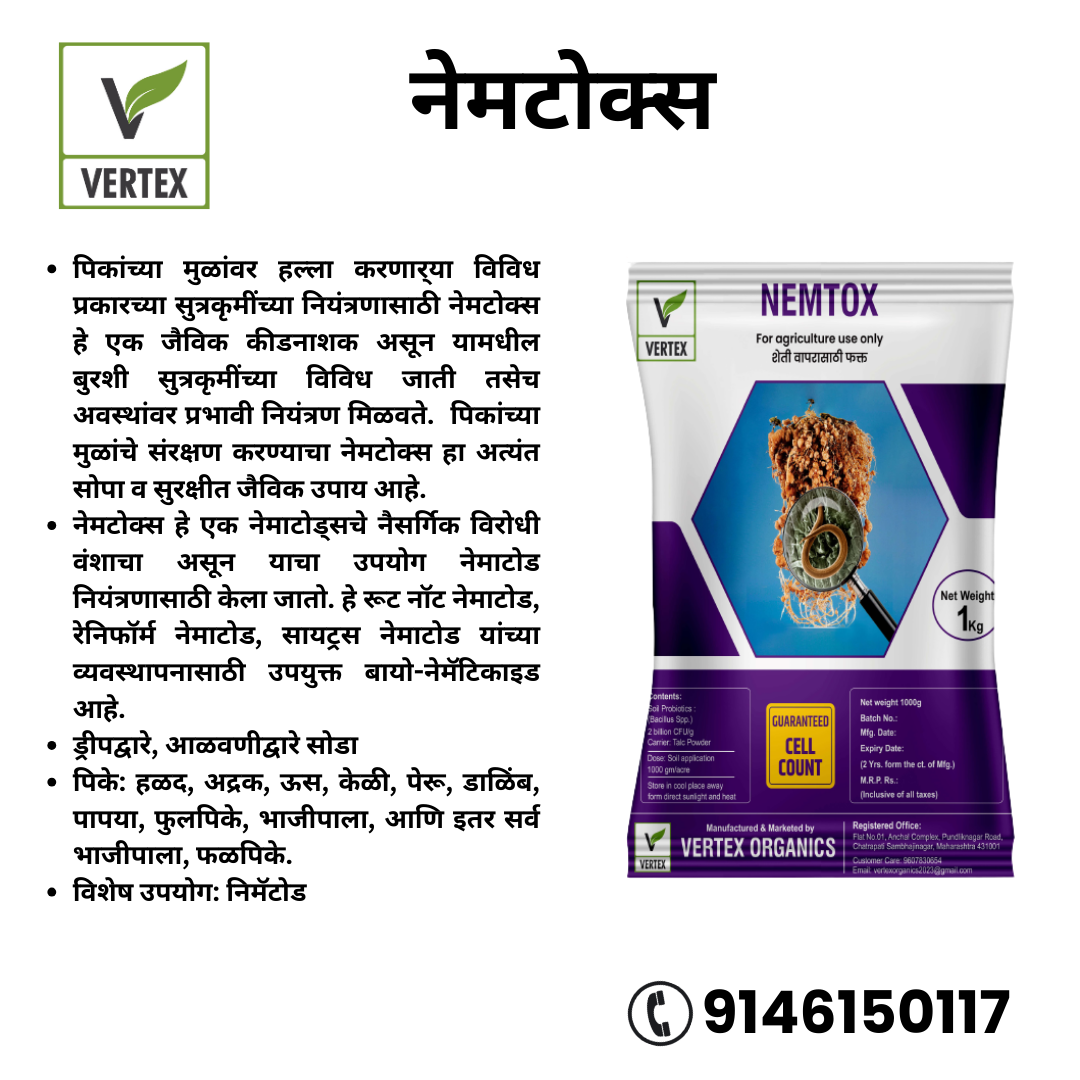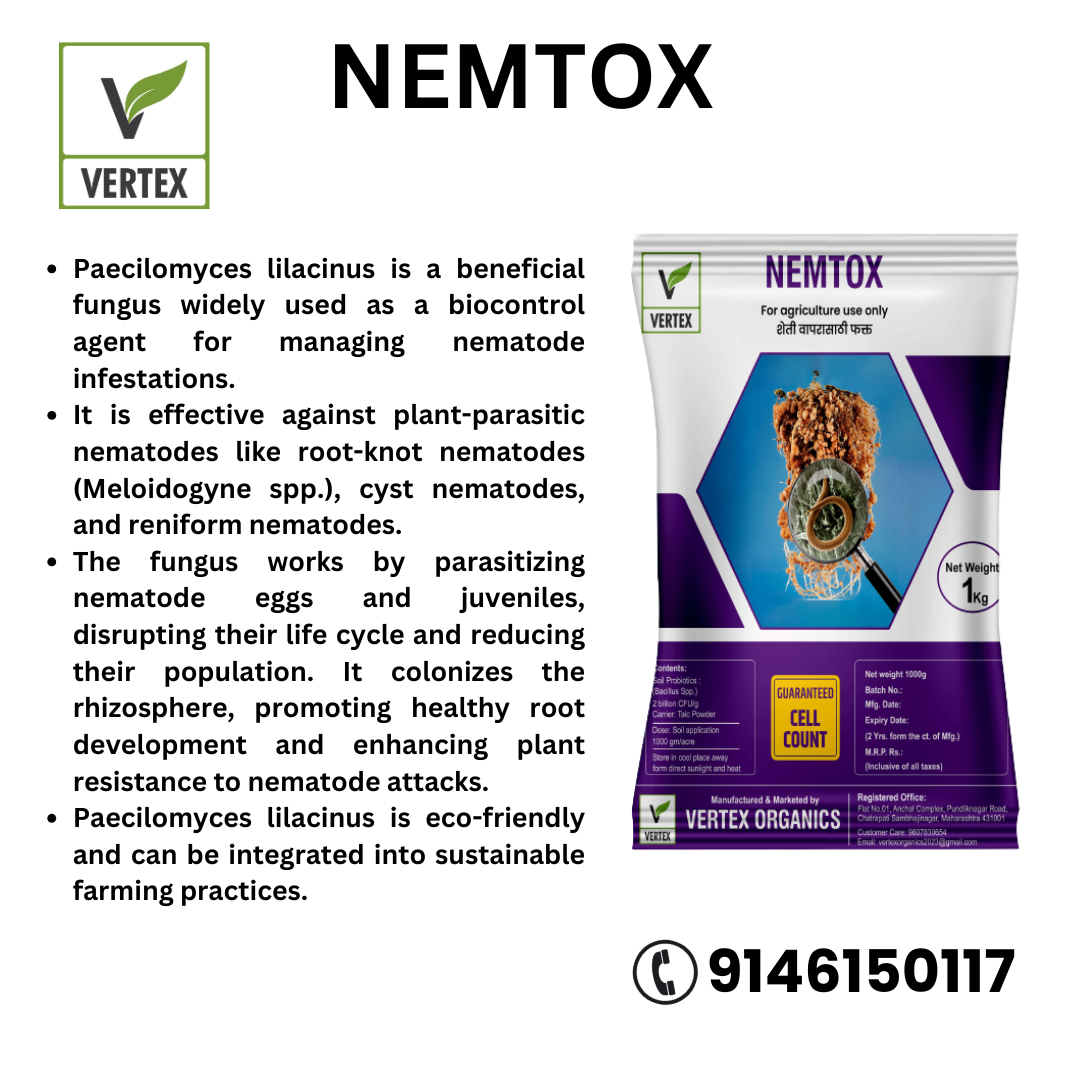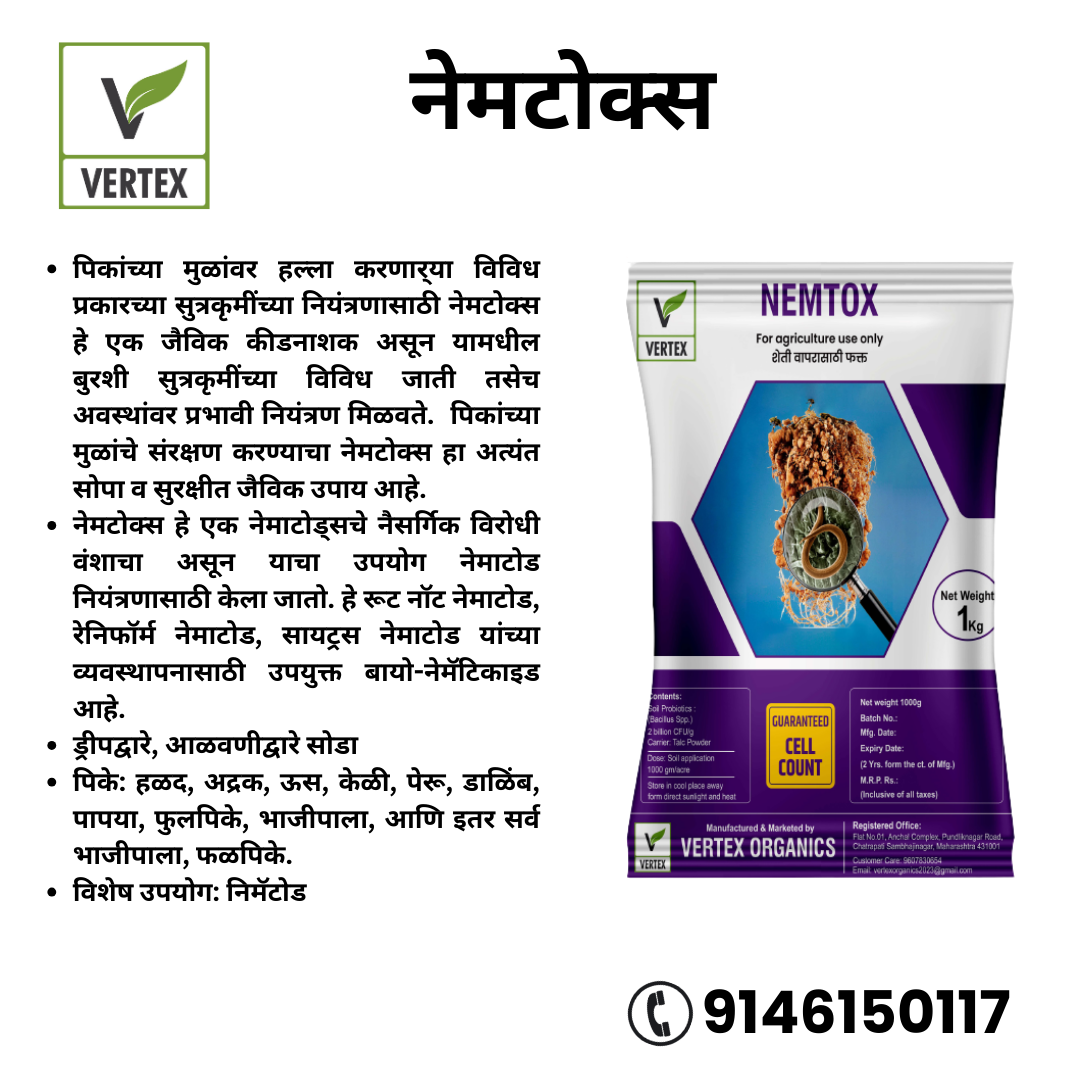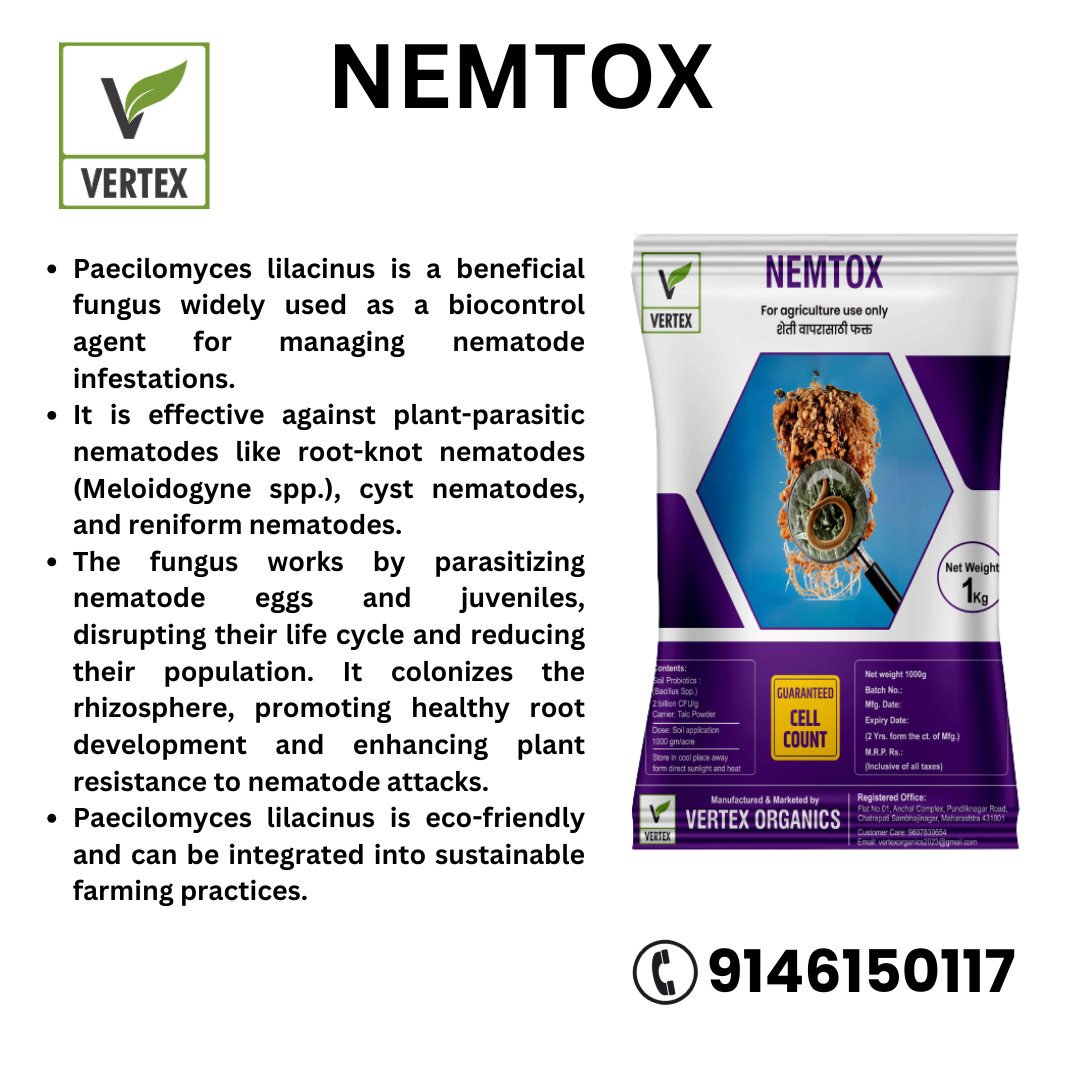Peak Lab
Paecilomyces Lilacinus Powder Formulation (Wettable Powder) Talc Based Powder
Paecilomyces Lilacinus Powder Formulation (Wettable Powder) Talc Based Powder
Couldn't load pickup availability
Paecilomyces lilacinus is a nematophagous fungus specialized in parasitizing plant-parasitic nematodes through egg and female invasion. Formulated at 2 × 10⁸ CFU/g on a talc carrier, it provides targeted, chemical-free control of root-knot and cyst nematodes while enhancing soil health.
Product Specifications
-
CFU: 2 × 10⁸ per gram (200 million viable spores/g)
-
Active Content: Spores and mycelium of Paecilomyces lilacinus (e.g., strain 251)
-
Carrier: Talc powder (pH 6.0–7.0 for optimal activity)
Usage Instructions
-
Dosage: 500 g–1 kg/acre in 200 L water for soil drench.
-
Timing: Apply at transplanting/seeding; reapply 30 days later in nematode-prone areas.
-
Primary Action: Parasitizes nematode eggs/females; secretes chitinases/proteases.
-
Target Nematodes:
-
Meloidogyne incognita (root-knot nematode)
-
Heterodera glycines (soybean cyst nematode)
-
Rotylenchulus reniformis (reniform nematode)
-
-
Method:
-
Drench soil uniformly in root zone (0–15 cm depth).
-
Mix with compost (1 kg/100 kg) for broadcast application.
-
-
Frequency: 2–3 applications per crop cycle; reapply after flooding.
-
Compatibility: Avoid nematicides; compatible with Purpureocillium lilacinum.
-
Safety: Non-toxic to plants, earthworms, and beneficial nematodes (Steinernema spp.).
Suitable Crops
-
Vegetables: Tomato, Brinjal, Okra, Cucurbits
-
Fruits: Banana, Grapes, Citrus
-
Field Crops: Soybean, Cotton, Potato
-
Staple Crops: Rice, Maize
-
Plantations: Coffee, Tea
Storage Instructions
-
Temperature: 4–15°C (refrigeration required; >25°C reduces viability).
-
Packaging: PP Bags
-
Shelf Life: 24 months.
-
Precautions: Avoid moisture, direct sunlight, and fungicide contamination.
Key Advantage
Egg-Specific Parasitism:
-
Destroys 90–95% of Meloidogyne eggs within 72 hours
-
Reduces root galls by 70–85% in infested soils (ICAR-IINRG trials)
-
Suppresses nematode reproduction via chitinase-mediated eggshell degradation
Mode of Action
-
Attachment: Spores adhere to nematode eggs/females.
-
Penetration: Hyphae invade egg casings or female cuticles.
-
Degradation: Secretes enzymes (chitinase, protease) dissolving structural components.
-
Sporulation: Fungus colonizes and sporulates, cycling infection.
🌱 Agronomic Protocol:
Apply to moist soil (>60% WHC) at 25–30°C for maximum efficacy.
Combine with organic amendments (neem cake) to boost spore germination.
Avoid alkaline soils (pH >8.0) – liming reduces activity.
Share
